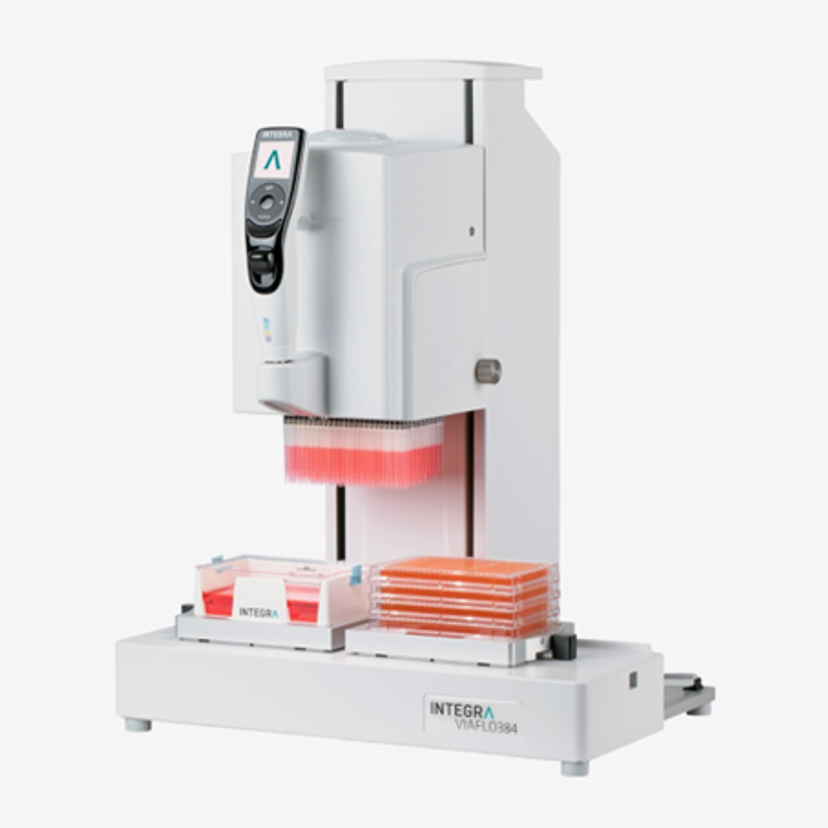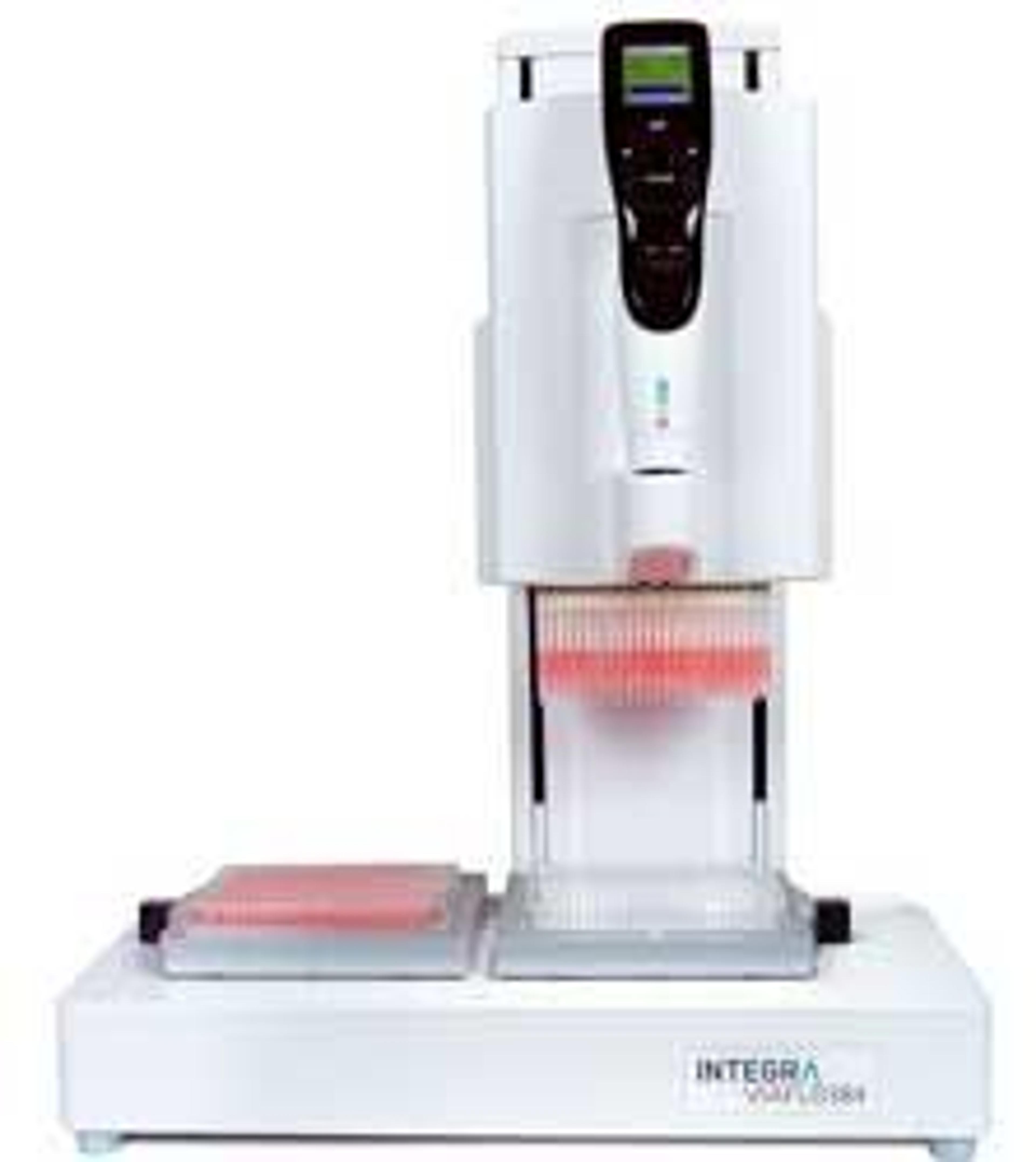Liquid handling solutions to combat cell culture challenges
Discover how VIAFLO 96 and VIAFLO 384 handheld electronic pipettes from INTEGRA Biosciences can be used to overcome key challenges associated with cell culture, including contamination, viability, and reproducibility.
29 Apr 2025
Cell culture is a fundamental technique in biological research that enables scientists to study cell biology, tissue morphology, and disease mechanisms in a controlled environment outside of a living organism. However, maintaining high quality and reproducible cell culture lines is often fraught with challenges.
One of the key factors involved in this highly complex process is efficient and precise liquid handling, as even minor variations can lead to inconsistent results and poor quality cell lines. The choice of liquid handling system for cell culture is therefore critical to its success. Cutting-edge solutions from highly regarded suppliers – such as INTEGRA Biosciences – are designed specifically to meet the complex needs of scientists working in cell culture every day.

The VIAFLO 96 and VIAFLO 384 offer versatility across a wide range of applications and volumes, with 10 unique pipetting heads in varying volume ranges (0.5 to 1250 µl) and numbers of channels (24, 96, or 384).
Innovative liquid handling solutions
INTEGRA Biosciences is a trusted leader in liquid handling technology, with a focus on precision, efficiency, and reproducibility. Each of the company’s pipetting tools is developed with scientists in mind, ensuring that products are robust enough to meet the rigorous demands of cell culture workflows. INTEGRA’s extensive range includes manual and electronic pipettes, pipetting robots, aspiration systems, and media preparation devices – all designed to streamline and optimize cell culture workflows.
The VIAFLO 96 and VIAFLO 384 handheld electronic pipettes, for instance, are widely praised for delivering high precision and reproducibility. One SelectScience reviewer stated: "This instrument is very easy to set up and easy to use. We use it for routine daily lab operations, and it has become our choice of instrument for repetitive pipetting and whole plate transfer of media and supernatants." This ringing endorsement highlights the instrument’s ease of use and time saving features, which are especially beneficial for repetitive tasks such as media exchange.
How to tackle common cell culture challenges
1. Overcoming the challenge of reproducibility
Reproducibility is one of the primary challenges associated with cell culture, as variations in cell behavior, media composition or even handling techniques can lead to inconsistent growth conditions and, consequently, inaccurate experimental results. The integration of advanced liquid handling solutions, such as the VIAFLO 96 and VIAFLO 384 from INTEGRA, ensures precise pipetting every time. For example, this automated cell passaging protocol highlights how the electronic control of the VIAFLO pipettes provides consistent transfer volumes across the entire plate, reducing errors and ensuring reproducible outcomes.
Furthermore, cell culture is increasingly becoming a high throughput operation, with applications such as spheroid formation and high content screening requiring reproducible and accurate large scale processing. The VIAFLO series is finely attuned to these applications, offering 24, 96, and 384 channel models that minimize sample variability and ensure even distribution. Using a multichannel pipette not only ensures accuracy but also significantly reduces time and labor requirements. In fact, one SelectScience user stated: "It only takes me 20 minutes to do a complete 384 well plate. I'm really surprised when I hear people from other labs say they pipette each well individually with manual single channel pipettes."
2. Mitigating contamination risks and ensuring cell viability
Contamination presents further challenges during cell culture protocols, with biological and cross-contamination being the primary concerns. Manual pipetting poses a risk of introducing contaminants into the culture, leading to compromised experimental results. Automated liquid handling systems reduce the risk of human error while also minimizing direct contact with the culture, thereby lowering the contamination risk.
Maintaining cell viability is also reliant on gentle handling of the cells to reduce stress. The VIAFLO 96 and VIAFO 384 are specifically designed to deliver precise and gentle handling of cells during processes such as cell passaging or seeding, where cell damage can affect viability. Their adjustable aspiration and dispensing speeds, in particular, ensure that shear stress and disruption during handling are minimized. In turn, this gentle handling ensures better cell recovery and maintenance of cell health.
A stepwise approach to automation
Overall, automating cell culture workflows offers numerous benefits, including improved consistency and reduced contamination risks. However, it can be challenging and expensive to automate an entire workflow.
Electronic pipettes can simplify this transition. While fully automating a routine workflow may be feasible for labs with the necessary space and budget, a stepwise introduction is a more viable option for many others. This can range from switching to electronic multichannel pipettes to investing in an automated plate filler. Furthermore, introducing an assisted robotic platform like the ASSIST PLUS pipetting robot can serve as an excellent intermediary, combining the flexibility of a handheld pipette with the throughput of automation. This approach allows labs to gradually incorporate automation into their workflows, enhancing efficiency without the need for significant infrastructure changes.
In summary, enhanced liquid handling tools – particularly those incorporating forward-thinking design characteristics – help to address many of the challenges associated with cell culture. Incorporating the VIAFLO 96 or VIAFLO 384 in a cell culture workflow helps to ensure precise liquid handling, improving reproducibility, throughput, cell viability, and contamination control. For labs working with large numbers of samples or conducting complex cell culture workflows, these advanced liquid handling systems can significantly enhance both the efficiency and success of their research.

Researchers around the world have shared their experiences with the VIAFLO 96 and VIAFLO 384 on SelectScience.


